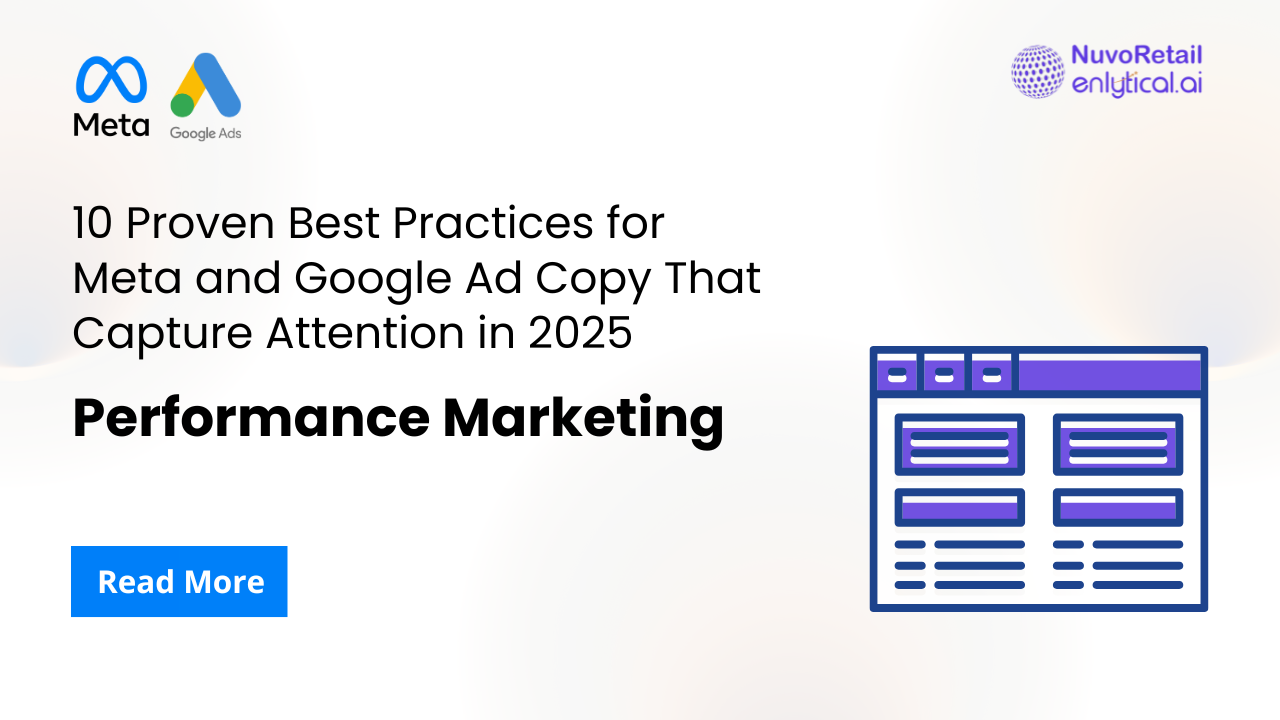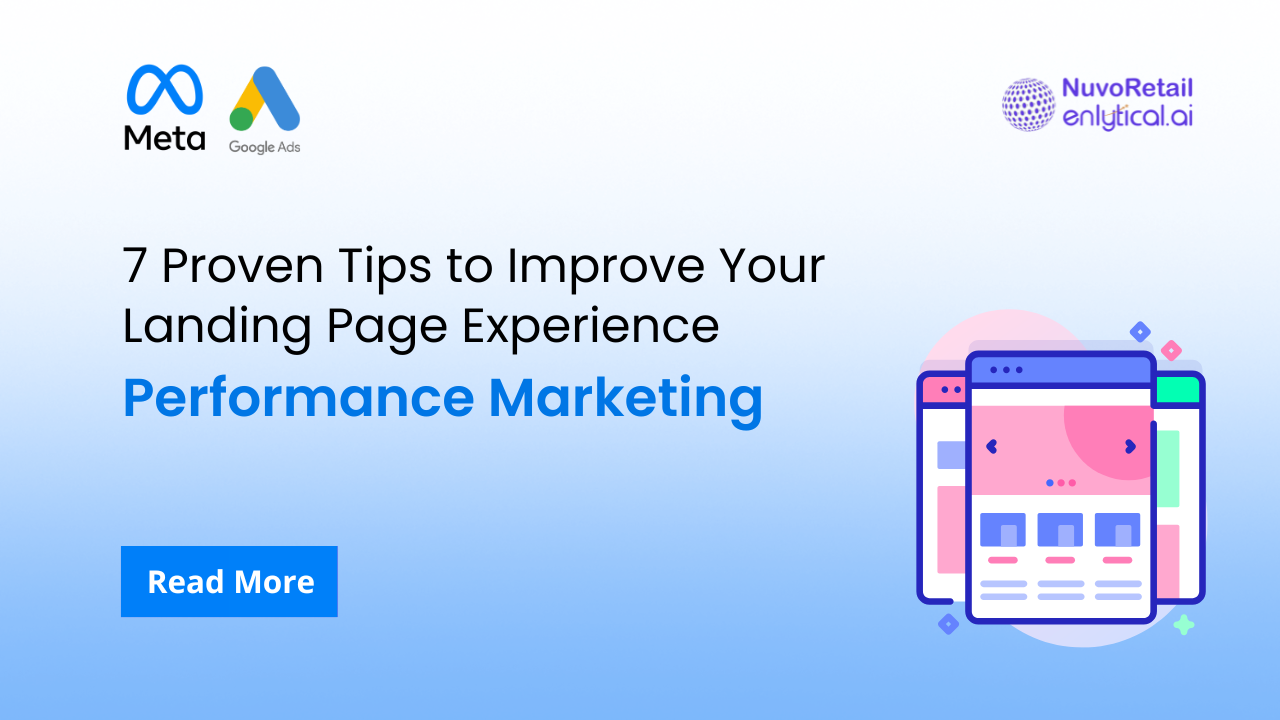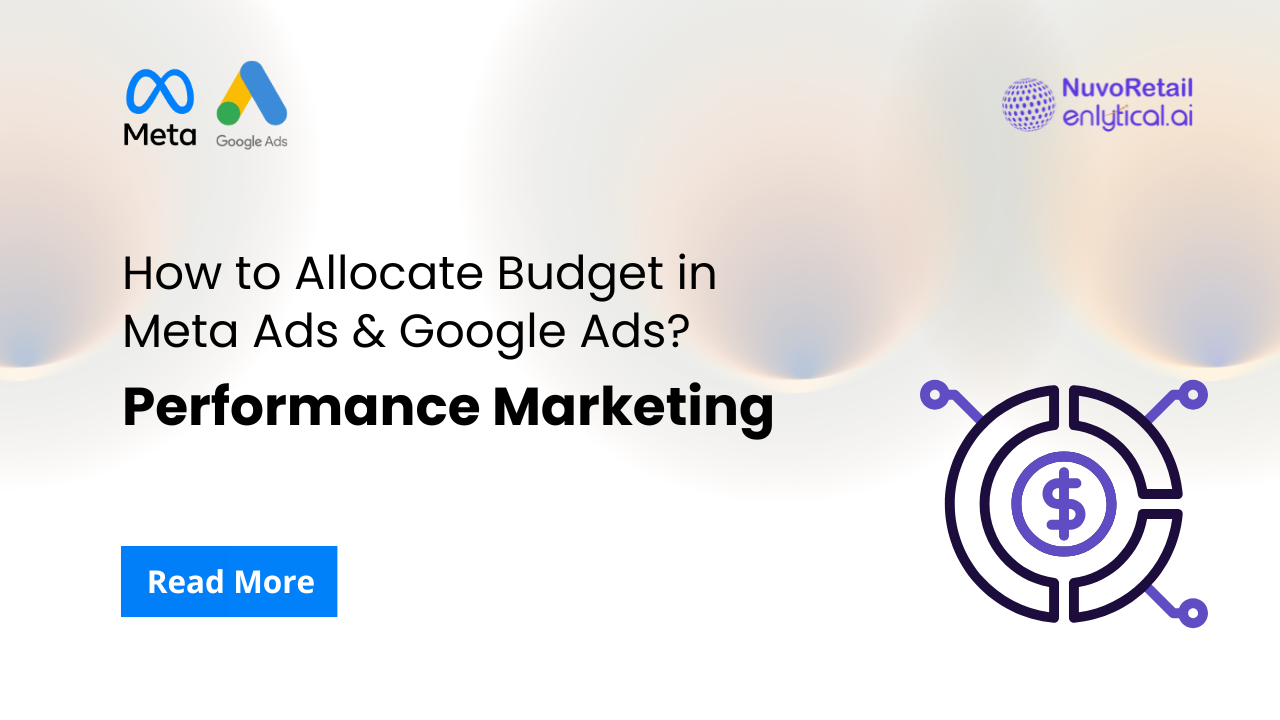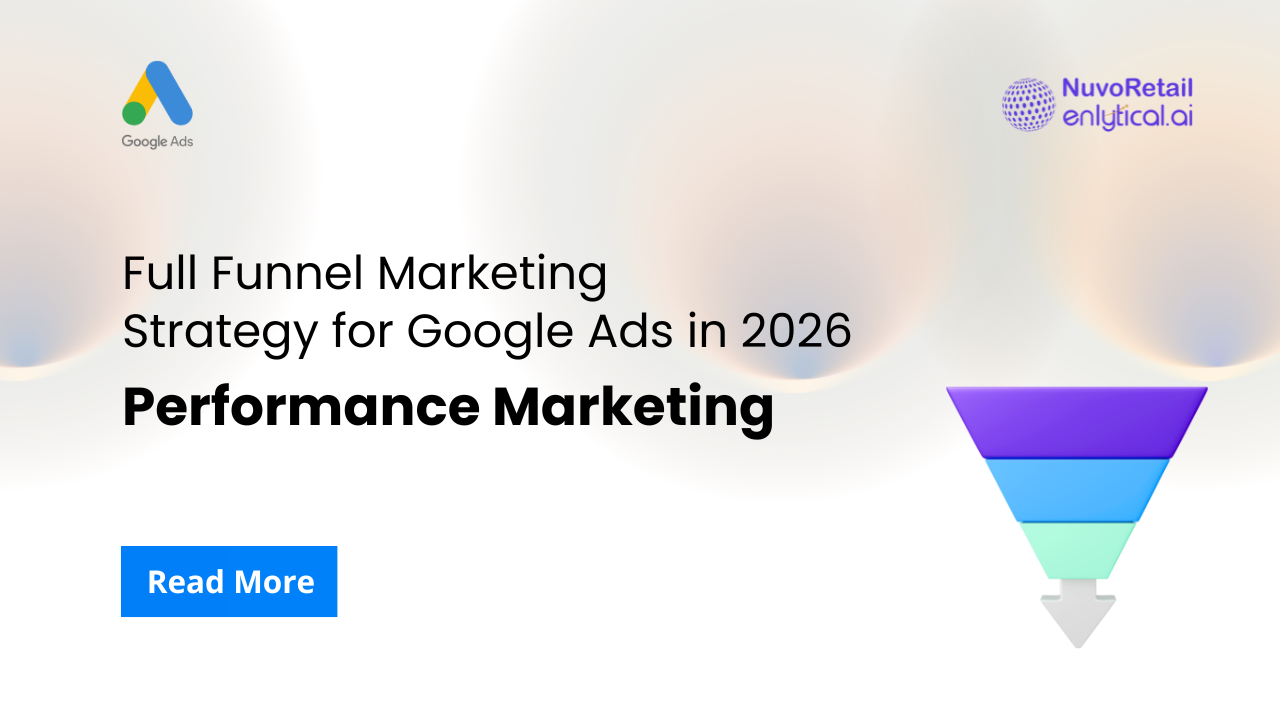Meta and Google ad copy has become the make-or-break factor in today’s fast-paced digital landscape. With attention spans shrinking to mere seconds, crafting compelling ad copy that stops the scroll and drives action is more challenging than ever. Whether you’re managing campaigns through Meta Ads Manager or Google Ads, understanding how to write concise, attention-grabbing copy is essential for marketing success. In this comprehensive guide, we’ll explore the most effective strategies to create Meta and Google ad copy that converts.
At NuvoRetail, we specialize in helping businesses maximize their ad performance across Meta and Google platforms with tailored performance marketing services. Our expertise lies in crafting ad copy that aligns with audience behavior, platform dynamics, campaign objectives and more, ensuring every word works toward driving conversions. From precise keyword targeting to creative testing and optimization, NuvoRetail’s data-driven approach helps brands cut through the noise and deliver ads that not only capture attention but also generate measurable ROI.
Table of Contents
- Why Meta and Google Ad Copy Matters More Than Ever
- Understanding Your Audience’s Short Attention Span
- 10 Essential Best Practices for Meta and Google Ad Copy
- Leveraging AI Tools for Better Ad Copy
- Platform-Specific Strategies
- Common Mistakes to Avoid
- Measuring and Optimizing Your Ad Copy Performance
- Conclusion
Why Meta and Google Ad Copy Matters More Than Ever
The digital advertising landscape has transformed dramatically. Users are bombarded with thousands of ads daily, making it crucial to capture attention within the first few seconds. Your Meta and Google ad copy serves as the first impression potential customers have of your brand.
Research shows that the average person’s attention span has dropped to just 8 seconds. This means your ad copy has less time than a goldfish’s attention span to make an impact. Whether you’re working in Meta Ads Manager or crafting Google ad copy, every word counts.
The competition for user attention has intensified, especially with the rise of short-form video content and endless scrolling feeds. This is where NuvoRetail comes in. Our team specializes in crafting ad copy and campaign strategies that cut through the noise, grab attention instantly, and drive measurable results. From attention-grabbing headlines to persuasive calls-to-action, we help ensure your Meta and Google campaigns stand out, reach the right audience, and convert clicks into customers.
Understanding Your Audience’s Short Attention Span
Before diving into best practices, it’s essential to understand why attention spans are shrinking. The modern consumer is constantly multitasking, switching between devices, and consuming content at lightning speed.
Meta ads appear in users’ personal feeds, competing with content from friends and family. Meanwhile, Google ads intercept users during active search moments when they’re looking for specific solutions. Each platform requires a different approach to capture attention effectively.
Your Meta and Google ad copy must immediately communicate value. Users make split-second decisions about whether to engage with your content or keep scrolling. This reality shapes every aspect of effective ad copywriting.
10 Essential Best Practices for Meta and Google Ad Copy
1. Lead with a Compelling Hook
The opening line of your Meta and Google ad copy determines success or failure. Start with a question, bold statement, or surprising statistic that stops users mid-scroll.
Effective hooks for meta ad copy often tap into emotions or address pain points directly. For example, “Tired of wasting money on ads that don’t convert?” immediately resonates with frustrated marketers.
Google ad copy benefits from hooks that align with search intent. If someone searches for “best project management software,” your hook might be “Stop juggling 10 different tools” to address their frustration.
2. Use Numbers and Specificity
Specific numbers make your ad copy more credible and scannable. Instead of saying “many customers,” say “over 10,000 customers.” This specificity builds trust and makes your claims more believable.
In Meta ads, numbers can highlight social proof, discounts, or timeframes. “Join 50,000+ entrepreneurs who increased revenue by 40%” is more compelling than vague success claims.
Google ads can leverage numbers in headlines and descriptions to stand out in search results. “5-minute setup” or “Save 30% today” provide clear, quantifiable benefits that capture attention.
3. Focus on Benefits, Not Features
Your Meta and Google ad copy should emphasize what users gain, not what your product does. Transform features into benefits that solve real problems.
Instead of “Our software has advanced analytics,” try “See exactly which marketing channels drive your best customers.” This transformation makes meta ad copy more relatable and actionable.
For Google ad copy, benefit-focused messaging aligns with user intent. Someone searching for “email marketing software” wants to know how it will improve their business, not technical specifications.
4. Create Urgency Without Being Pushy
Urgency motivates action, but heavy-handed tactics can backfire. Your ad copy should create genuine reasons to act now while maintaining authenticity.
Limited-time offers work well in Meta ads manager campaigns, especially when targeting users who’ve shown previous interest. “Sale ends tonight” is direct and effective when used appropriately.
Google ads can leverage urgency through seasonal relevance or inventory limitations. “Only 3 spots left in January cohort” creates urgency without feeling manipulative.
5. Match Your Copy to Landing Page Experience
Consistency between your Meta and Google ad copy and landing pages is crucial for conversion optimization. Users should feel like they’re in the right place when they click through.
Your meta ads promise should be fulfilled immediately on the landing page. If your ad promotes a “free marketing audit,” the landing page should prominently feature that offer.
This alignment is equally important for Google ad copy. The keywords and messaging that attracted the click should be reinforced on the landing page for optimal user experience.
For more insights on optimization strategies, check out our guide on A/B testing ads strategies to boost ROI.
6. Leverage Social Proof Strategically
Social proof makes your Meta and Google ad copy more persuasive by showing that others have succeeded with your product or service.
Customer testimonials work exceptionally well in meta ad copy. “This tool helped me double my sales in 3 months – Sarah K.” provides credible third-party validation.
Google ads can incorporate review stars, customer counts, or industry recognition to build trust quickly. “Rated #1 by 10,000+ users” stands out in search results.
7. Optimize for Mobile-First Experience
Most users encounter your ad copy on mobile devices, so optimization for smaller screens is essential. Keep headlines short and descriptions scannable.
Meta ads should be readable without expanding text. The key message should be visible in the preview, encouraging users to engage further.
Google ad copy must work within character limits while remaining compelling on mobile. Use every character strategically to maximize impact in limited space.
8. Use Power Words and Emotional Triggers
Power words elevate your Meta and Google ad copy by evoking strong emotional responses. Words like “exclusive,” “breakthrough,” “instant,” and “guaranteed” can significantly increase engagement rates.
Meta ad copy benefits from emotional triggers that create connection. “Finally, a solution that understands your struggles” speaks directly to user frustrations and positions your brand as empathetic.
Google ads can use power words in headlines to stand out in search results. “Revolutionary marketing tool” or “Effortless campaign management” immediately communicates superiority and ease of use.
However, balance is crucial. Overusing power words can make your ad copy seem spammy or untrustworthy. Choose them strategically based on your audience and platform context.
9. Implement Strategic Keyword Integration
While avoiding keyword stuffing, your Meta and Google ad copy should naturally incorporate relevant search terms and phrases your audience uses.
For Google ad copy, include your primary keyword in at least one headline when possible. This improves Quality Score and ensures relevance to user searches.
Meta ads benefit from using language and terms your target audience naturally uses in conversations. This makes your ad copy feel more authentic and relatable.
Research shows that ads with strategic keyword integration can improve click-through rates by up to 25%. The key is making integration feel natural rather than forced.
10. Test Different Ad Formats and Structures
Your Meta and Google ad copy should be tested across different formats to maximize performance. Single image ads, carousel ads, and video ads each require different copywriting approaches.
Meta Ads Manager offers multiple format options, from Stories to Reels to feed posts. Each format demands unique ad copy strategies to capture attention effectively.
Google ads provide various extensions and formats that can enhance your core message. Sitelink extensions, callout extensions, and structured snippets all offer additional opportunities for compelling copy.
Testing different structures—question-based headlines versus benefit-focused ones—reveals what resonates best with your specific audience segments.
Leveraging AI Tools for Better Ad Copy
The best AI tools are revolutionizing how marketers create Meta and Google ad copy. These platforms can generate multiple variations, test different approaches, and optimize based on performance data.
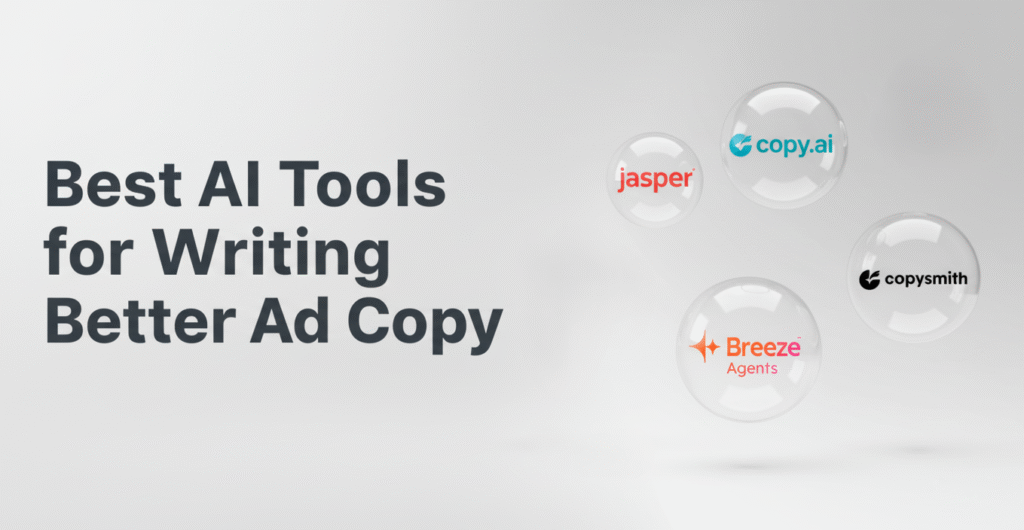
Leading best AI tools in the market include:
- Jasper AI – Comprehensive copywriting platform with dedicated ad copy templates
- Copy AI – User-friendly interface perfect for creating multiple Meta and Google ad copy variations
- Breeze Content Agent by HubSpot – Integrated solution for marketers using HubSpot’s ecosystem
- Describly – Part of the Copysmith bundle of AI copywriting tools that also includes Frase (SEO) and Ryter (writing assistant)
- Writesonic – AI-powered platform specializing in high-converting ad copy
- LocaliQ – Comprehensive digital marketing platform with built-in AI copywriting capabilities
AI copywriting tools can help overcome writer’s block and provide fresh perspectives on messaging. However, human oversight remains crucial for brand voice and strategic direction.
Best tools for ad copy creation include platforms that integrate directly with Meta Ads Manager and Google Ads, streamlining the campaign creation process while maintaining quality.
Google’s own resources on creating effective ad copy with AI provide platform-specific guidance for leveraging artificial intelligence in your campaigns.
Platform-Specific Strategies
Meta Ads Best Practices
Meta ads require a social-first approach that feels native to the platform. Your meta ad copy should spark conversations and encourage engagement.
Visual storytelling works particularly well in Meta Ads Manager. Combine compelling images with concise copy that complements rather than repeats the visual message.
Meta ads perform better when they don’t feel like traditional advertising. Focus on solving problems or providing value rather than pushing products directly.
Google Ads Optimization
Google ad copy should align closely with search intent and keywords. Users are actively looking for solutions, so your messaging should address their specific needs.
Search ads benefit from clear calls-to-action and specific landing page promises. “Get your free quote today” is more effective than generic “learn more” messaging.
For comprehensive guidance, Unbounce’s guide to writing the best Google Ads copy provides detailed platform-specific strategies.
Common Mistakes to Avoid
Many marketers make critical errors that undermine their Meta and Google ad copy effectiveness. Avoiding these pitfalls can dramatically improve campaign performance.
Generic messaging fails to capture attention in competitive environments. Your ad copy must differentiate your offering clearly and compellingly.
Overcomplicating the message is another common mistake. Users need to understand your value proposition within seconds, so clarity trumps cleverness.
Neglecting mobile optimization can destroy campaign performance since most users interact with meta ads and Google ads on mobile devices.
For deeper insights into campaign optimization, explore our article on performance marketing metrics that matter most.
Measuring and Optimizing Your Ad Copy Performance
Successful Meta and Google ad copy requires continuous testing and refinement. Key metrics include click-through rates, conversion rates, and cost per acquisition.
A/B testing different versions of your ad copy reveals what resonates with your audience. Test one element at a time to isolate the impact of specific changes.
Meta Ads Manager and Google Ads provide detailed performance data to guide optimization decisions. Focus on metrics that align with your campaign objectives.
GrowMyAds’ comprehensive guide offers additional strategies for improving Google Ads copy performance through systematic testing.
Regular performance reviews help identify trends and opportunities for improvement. What works today may not work tomorrow as audience preferences evolve.
Conclusion
Creating effective Meta and Google ad copy that captures short attention spans requires strategic thinking, continuous testing, and platform-specific optimization. The ten best practices outlined in this guide provide a comprehensive foundation for improving your ad performance.
Remember that successful ad copy combines creativity with data-driven insights. Use best AI tools and human expertise to create messages that resonate with your target audience while achieving your business objectives.
The key to mastering Meta and Google ad copy lies in understanding your audience, testing relentlessly, and optimizing based on real performance data. Start implementing these strategies today to see immediate improvements in your campaign results.
Struggling to Make Your Meta & Google Ads Really Work? Let’s Fix That!
Don’t let ineffective Meta and Google ad copy drain your advertising budget. Our team at NuvoRetail specializes in creating high-converting ad campaigns that capture attention and drive results.
Contact us today to discover how we can help optimize your Meta ads and Google ads for maximum impact. Your competitors are already implementing these strategies – make sure you’re not left behind.
What’s your biggest challenge with Meta and Google ad copy? Share your experience in the comments below and let’s solve it together!
